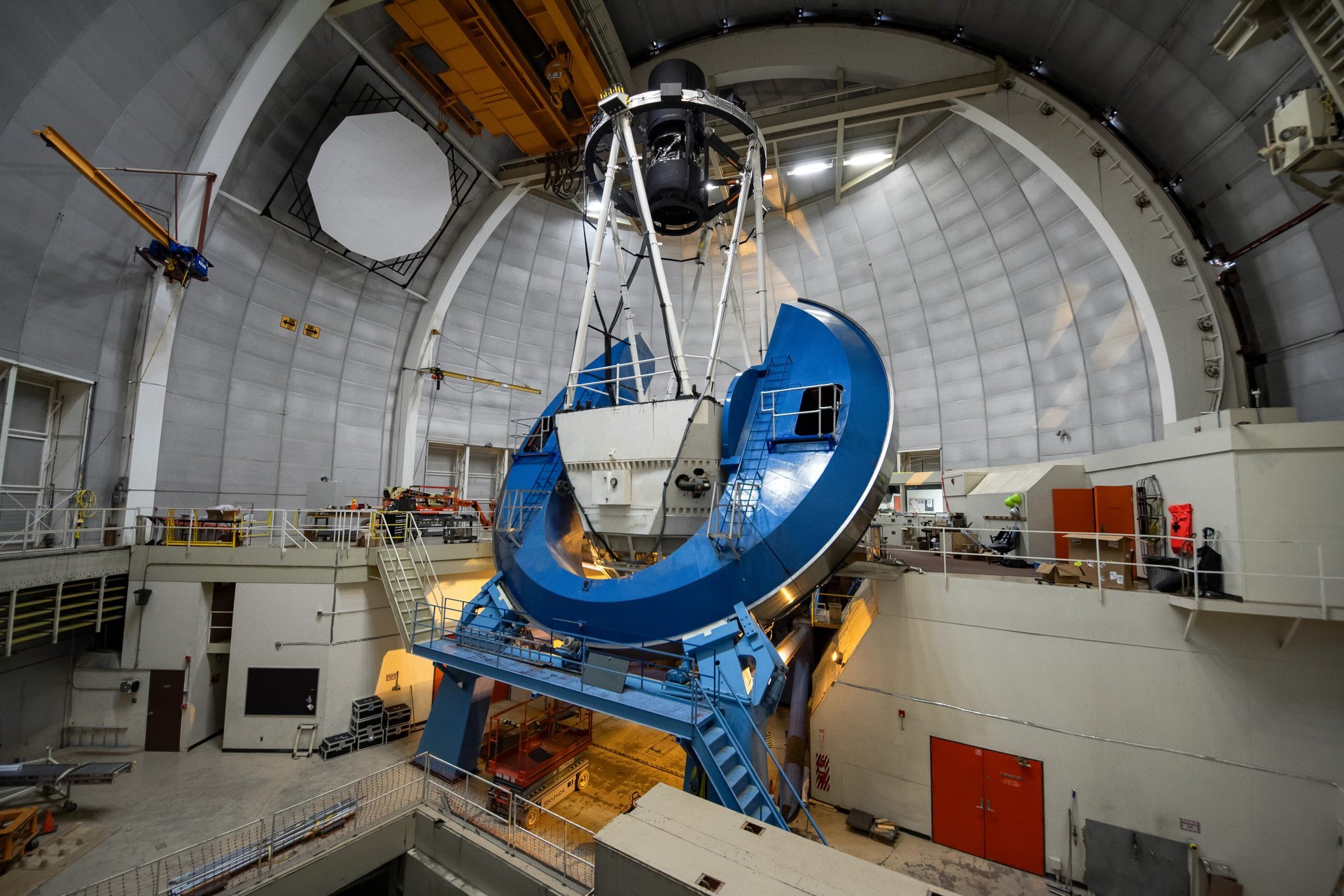Science
DESI Collaboration Unveils Surprising Evidence on Dark Energy

In March 2024, the DESI collaboration revealed intriguing evidence suggesting that dark energy may be diminishing over time. This finding has generated significant interest within the cosmological community, as it challenges existing theories about the nature of the universe. While the results are not conclusive, they open up new avenues for exploration and debate among scientists.
The Dark Energy Spectroscopic Instrument (DESI) is a state-of-the-art telescope located on Kitt Peak in southeastern Arizona. With a diameter of approximately 4 meters, DESI employs 5,000 robotically controlled fiber optic cables to conduct its galaxy survey. Each night, the telescope selects a specific patch of the sky to observe, and the robots align the fiber optic cables with the positions of galaxies within that area. This meticulous process has resulted in a catalog of over 13 million galaxies, marking it as the most extensive survey of galaxy positions to date. DESI aims to expand this catalog to cover 50 million galaxies upon completion of the survey.
The innovative design of DESI represents a significant advancement over earlier galaxy surveys, such as the Sloan Digital Sky Survey, which relied on graduate students to position the fiber optics manually. While DESI’s survey only encompasses less than 1% of all galaxies in the observable universe, its findings can profoundly impact our understanding of cosmic structures.
Understanding the arrangement of galaxies on a grand scale provides essential insights into the universe’s composition and behavior. A critical component of the recent DESI analysis is a phenomenon known as baryon acoustic oscillations (BAO). These oscillations are remnants of sound waves from the early universe when it was smaller, hotter, and denser.
During the universe’s infancy, around 380,000 years after the Big Bang, matter existed in a hot plasma state. As gravity and radiation interacted, sound waves formed within this plasma. Eventually, as the universe cooled, these sound waves became “frozen” in place, creating regions of slightly higher density. These regions, which are approximately 800 million light-years in diameter, can be visualized through the cosmic microwave background radiation—an imprint of the early universe.
The shells created by these BAO act as a “standard ruler” for measuring cosmic distances. By knowing their expected size, scientists can compare it to their observed size in the present universe. This comparison is crucial for understanding the properties and evolution of the universe.
The recent findings from DESI indicate that the BAO shells do not align perfectly with current cosmological expectations. Instead, they suggest a model of the universe where dark energy is evolving over time. This raises important questions about the nature of dark energy itself and its role in the universe’s expansion.
As the DESI collaboration continues its work, the implications of these surprising results will likely be felt across the fields of cosmology and astrophysics. With the promise of gathering data from millions more galaxies, scientists are poised to deepen their understanding of the universe and the fundamental forces that govern it.
-

 Science3 weeks ago
Science3 weeks agoOhio State Study Uncovers Brain Connectivity and Function Links
-

 Politics3 weeks ago
Politics3 weeks agoHamas Chief Stresses Disarmament Tied to Occupation’s End
-

 Entertainment3 weeks ago
Entertainment3 weeks agoMegan Thee Stallion Exposes Alleged Online Attack by Bots
-

 Science1 month ago
Science1 month agoResearchers Challenge 200-Year-Old Physics Principle with Atomic Engines
-

 World3 weeks ago
World3 weeks agoFDA Unveils Plan to Cut Drug Prices and Boost Biosimilars
-

 Entertainment3 weeks ago
Entertainment3 weeks agoPaloma Elsesser Shines at LA Event with Iconic Slicked-Back Bun
-

 Top Stories3 weeks ago
Top Stories3 weeks agoFederal Agents Detain Driver in Addison; Protests Erupt Immediately
-

 Business3 weeks ago
Business3 weeks agoMotley Fool Wealth Management Reduces Medtronic Holdings by 14.7%
-

 Entertainment3 weeks ago
Entertainment3 weeks agoBeloved Artist and Community Leader Gloria Rosencrants Passes Away
-

 Business3 weeks ago
Business3 weeks agoHome Depot Slashes Prices on Halloween Favorites Up to 75%
-

 Politics1 month ago
Politics1 month agoNHP Foundation Secures Land for 158 Affordable Apartments in Denver
-

 Top Stories3 weeks ago
Top Stories3 weeks agoOrioles Hire Craig Albernaz as New Manager Amid Rebuild








